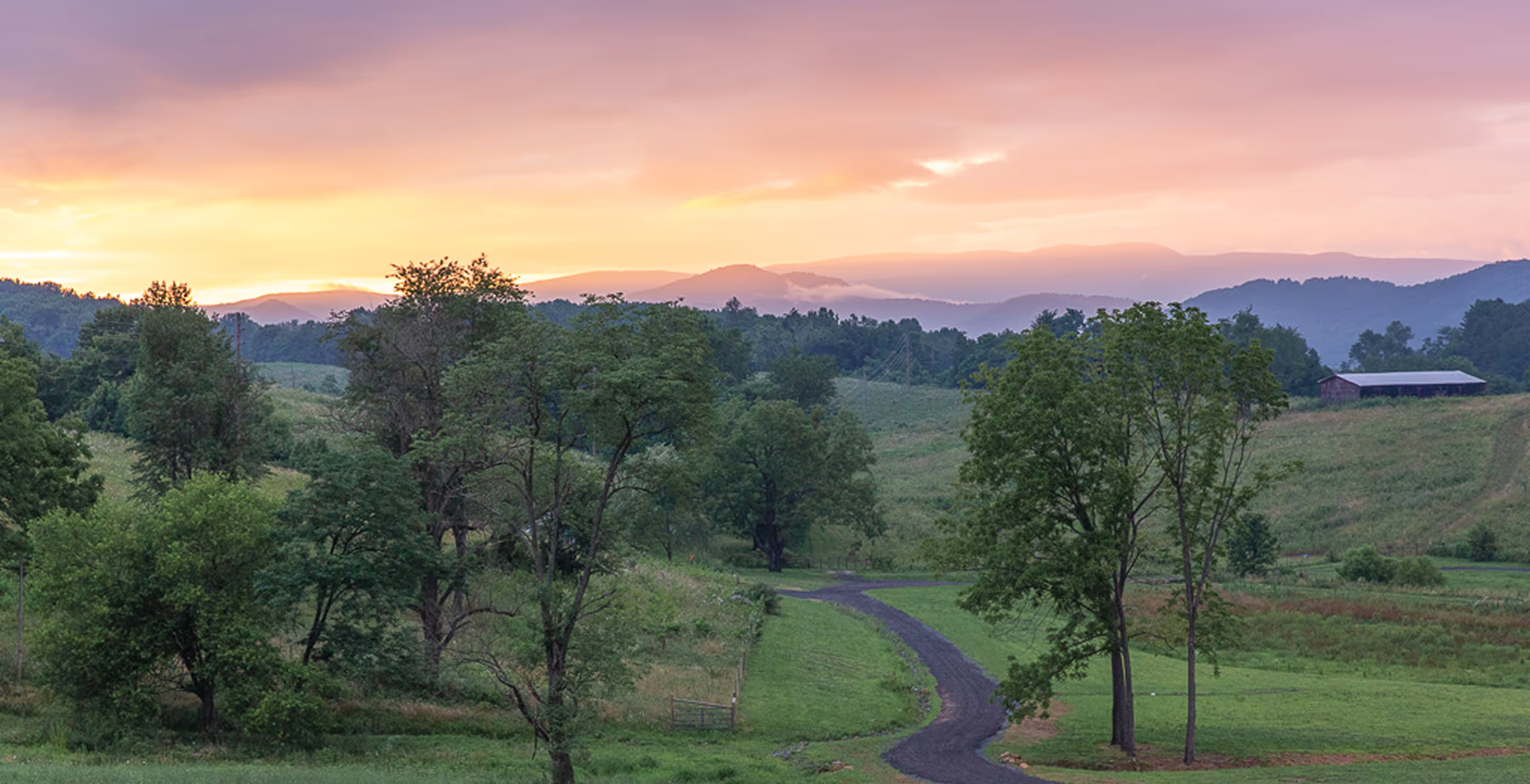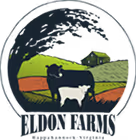Nurturing Healthy Ecosystems on a
Working Farm
Work with your land, not against it. Discover practical, proven ways to lower costs, improve soil and herd health, and ensure your farm thrives for the long haul.
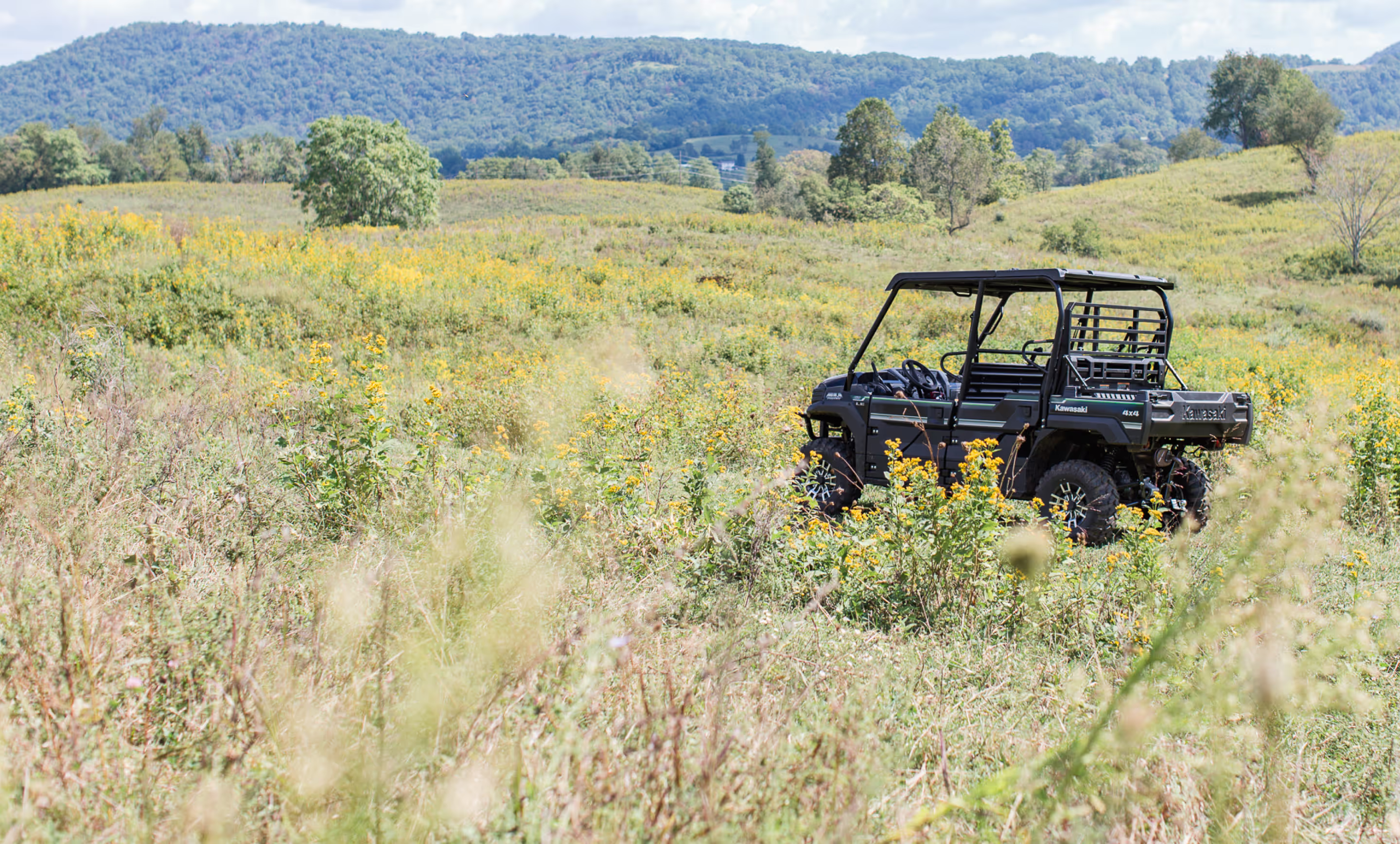
Stewardship in Action
We go beyond preservation — testing real solutions that restore land, protect water, and support both nature and farming in harmony.


Supporting Biodiversity
Native plants, pollinators, birds, and other wildlife find thriving habitats.

Water Runs Cleaner
Streams flowing through managed pastures meet or exceed quality standards.

Habitats Connect
Wildlife can move safely between woodlands, fields, and waterways.

Land is Resilient
Ecosystems are better equipped to handle drought, floods, and other challenges.

Ecology is Enhanced
The natural character of Rappahannock is conserved for future generations.
More Than Just
Pasture
Our open fields are vital habitats. We're moving beyond monocultures of non-native grasses to foster diverse, resilient grasslands and savannas that support both livestock and wildlife.

Instead of costly, disruptive full-field replanting, we establish small "islands" of native warm-season grasses like big bluestem and indiangrass. Protected temporarily, these islands act as seed sources, gradually spreading native grasses across pastures over time, enhancing drought tolerance and forage diversity.
Mimicking historic bison herds, our carefully managed rotational grazing maintains grasslands, cycles nutrients, and creates varied habitat structures beneficial for insects and birds. Healthy grazing builds healthy grasslands.
We balance the need to control woody plant encroachment with the conservation of grassland nesting birds. By strategically mowing immediately after grazing, even sometimes during nesting season, we minimize disturbance to nesting birds while ensuring that the grasslands they rely on persist for the long term.
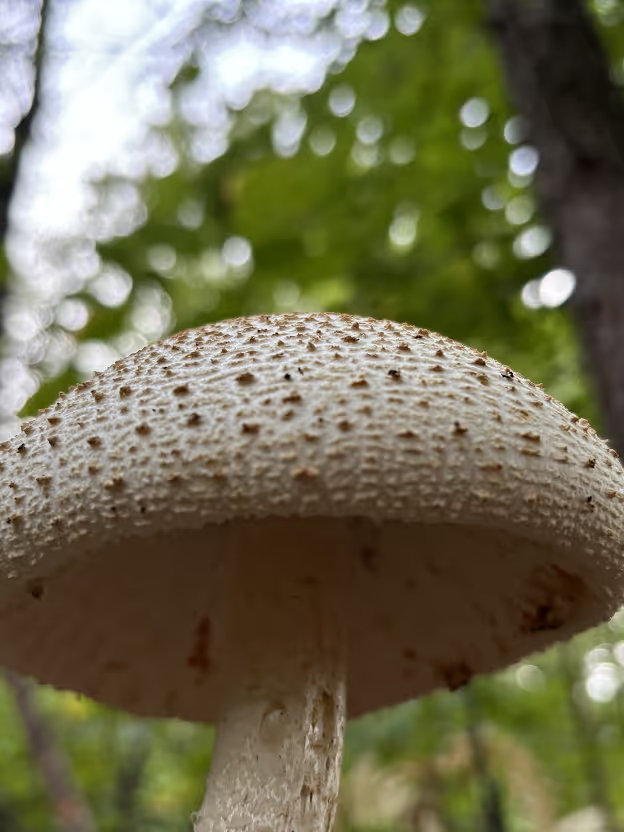
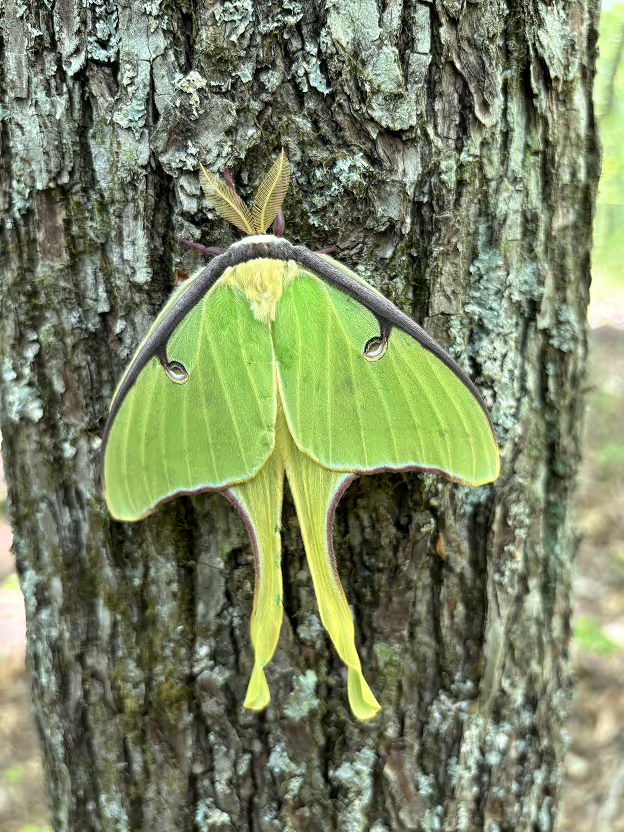

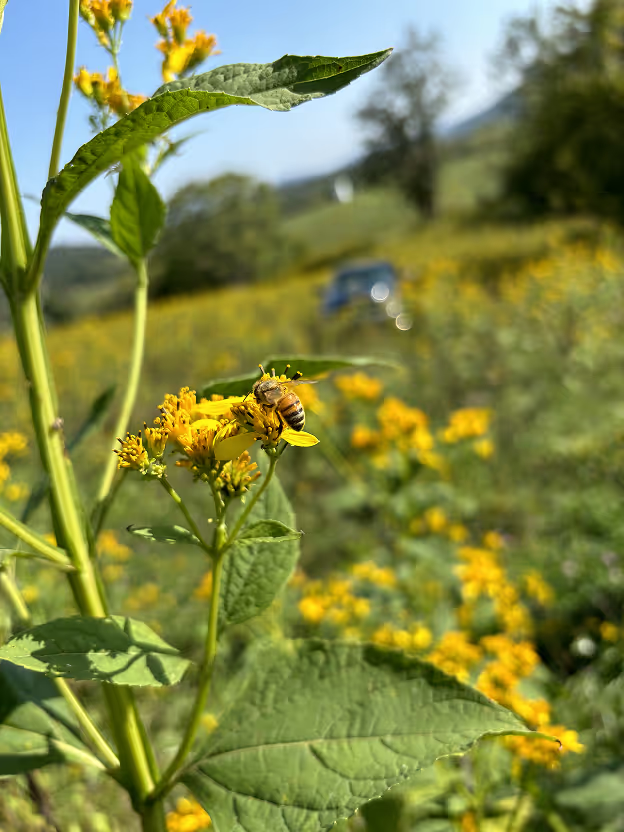

Protecting Our Creeks and Wetlands
Eldon Farms encompasses the headwaters of several key Rappahannock streams. We take our responsibility for water quality seriously, implementing practical strategies supported by data.
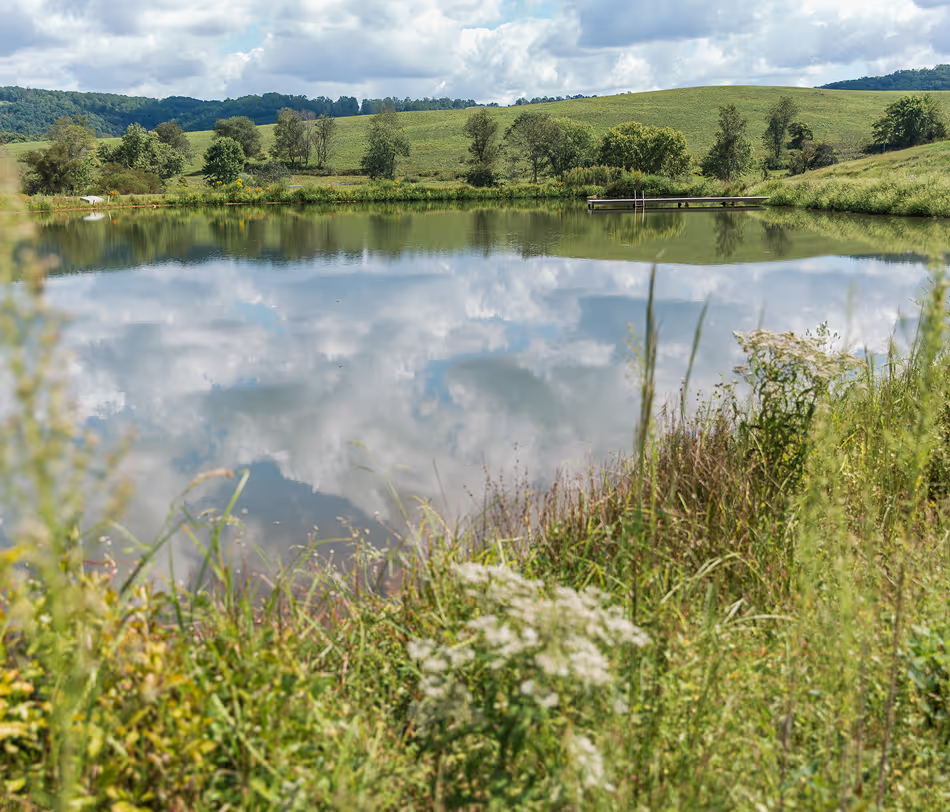
We allow trees and shrub to regrow naturally, creating vital buffer zones at least 60 feet wide along our three named streams. We use temporary electric fencing to exclude cattle only during critical hot summer months when lounging impacts water quality. This maintains clean water (demonstrated by E. coli, Nitrogen, and Phosphorus tests) without the cost and inflexibility of permanent fencing.
We work with native seed banks to restore diverse plant communities along streams, minimizing expensive tree plantings and letting nature lead the way.
We install simple Beaver Dam Analogs (BDAs) made from natural materials to slow water flow, reduce erosion, create wetland pockets, and encourage beavers – nature's engineers – to enhance the habitat further.
Healthy Forests and
Vital Edges
The edges where grasslands meet forests are critical zones for wildlife but often become overrun with invasive species. We're actively managing these transitions to create healthy forests and functional brushland habitat.
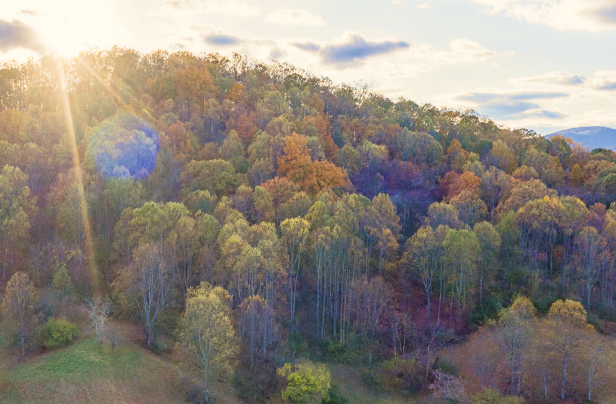
Instead of mowing right to the treeline, we're designating and managing strips of brushland (at least 30 feet wide) to connect existing woodland and riparian areas. These corridors provide essential cover and habitat for wildlife moving across the farm.
We adjust fence lines away from the immediate forest edge, allowing access for targeted invasive species treatments (using methods from mowing to selective grazing with sheep) and preventing ecologically damaging plants from dominating these vital transitional zones.
By managing deer populations through our licensed hunting program and reducing invasive plants, we're giving young native trees, especially vital oaks, a chance to survive and mature, ensuring the future of our forests.
Be a Steward for Rappahannock's Ecosystems
Every landowner and community member can contribute to a healthier local environment.
Plant Natives, Remove Invasives
Swap out just one invasive plant (like burning bush) for a beautiful, beneficial native shrub (like serviceberry) in your yard. It makes a real difference.

Create Backyard Habitat
Even reduced lawn areas, small patches of native plants, or brush piles can provide food and shelter for local birds, butterflies, and pollinators.

Support Balanced Land Use
Understand that well-managed farms and forests are valuable habitats. Advocate for practical, data-informed conservation approaches that work with landowners and agricultural needs.
Common questions about our approach
Are cattle bad for the environment and streams?
It's all about management. Uncontrolled access can cause problems, but well-managed grazing (like our rotational system and seasonal stream exclusion) actually mimics natural processes, maintains grasslands, cycles nutrients, and our data shows it can coexist with excellent water quality
How do you really know if your methods are improving the ecosystem?
We don't guess. We actively monitor key indicators – regular water testing, annual soil health checks (biological activity), bird diversity counts, tracking native plant spread, and observing forest regeneration. This data guides our adaptations.
Isn't it better to leave land wild for nature?
In many Rappahannock landscapes, simply leaving land alone invites invasive species to take over, reducing biodiversity. Active, thoughtful stewardship – whether controlling invasives, using grazing appropriately, or selective mowing – is often necessary to maintain healthy, diverse habitats.
How do you balance the needs of different types of wildlife?
By creating a mosaic of habitats – open grasslands, dense scrub, healthy forests, clean streams, and managed edges. Different species need different things, and variety across the landscape provides the best support for overall biodiversity.
Explore Eldon's Ecosystems Further
Dive deeper into our research, get practical resources for your own land, or learn about partnership opportunities.
